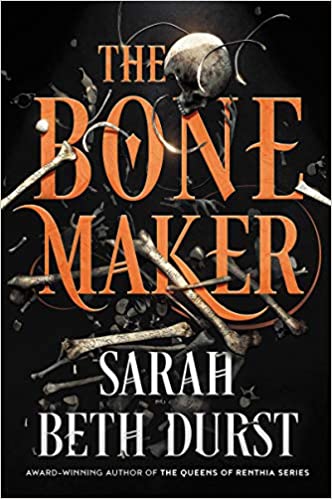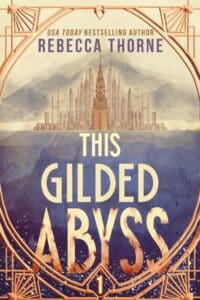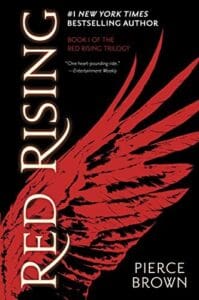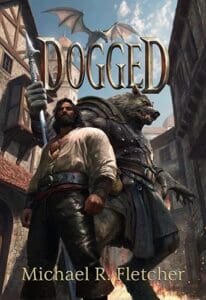Rating: 8/10
Synopsis
Twenty-five years ago, five heroes risked their lives to defeat the bone maker Eklor—a corrupt magician who created an inhuman army using animal bones. But victory came at a tragic price. Only four of the heroes survived.
Since then, Kreya, the group’s leader, has exiled herself to a remote tower and devoted herself to one purpose: resurrecting her dead husband. But such a task requires both a cache of human bones and a sacrifice—for each day he lives, she will live one less.
She’d rather live one year with her husband than a hundred without him, but using human bones for magic is illegal in Vos. The dead are burned—as are any bone workers who violate the law. Yet Kreya knows where she can find the bones she needs: the battlefield where her husband and countless others lost their lives.
But defying the laws of the land exposes a terrible possibility. Maybe the dead don’t rest in peace after all.
Five warriors—one broken, one gone soft, one pursuing a simple life, one stuck in the past, and one who should be dead. Their story should have been finished. But evil doesn’t stop just because someone once said, “the end.
Review
The Bone Maker by Sarah Beth Durst really caught my attention in the beginning. The author uses emotion and adventure to bring the reader in and set up the main storyline.
The crux of the narrative is Kreya’s attempt to bring her husband back to life using bone magic. This magic requires certain materials, though, and Kreya needs help collecting them. She cannot accomplish this alone, which means getting in touch with her old crew (and I mean “old” both in the “before present times” sense and also in the “4:00 dinner special” way). This, of course, opens wounds that have been festering for decades for everyone involved. After some convincing, Kreya gets the help she needs, and in doing so everyone gets more than they bargained for.
This first third of the book highlights the best aspects of the story. Kreya’s task is a really relatable one: bringing a loved one back to life. For me it is easy to be empathetic to her cause. I can imagine being in that situation, knowing there is a way to make it work, and wanting to do everything I could to make it happen. This piece of the story is incredibly well-done because it brings so many parts of the story to the forefront: Kreya’s relationship with her husband, Kreya’s past deeds with her crew and an evil sorcerer, and Kreya’s use of bone magic (both legal and illegal). It sucked me right in, and I was immersed from the start.
And things really just get better from there as far as the first third of the book is concerned, as the narrative begins to round out into an adventure fantasy (I am sure you tell how giddy I am about that). This group of former heroes who had previously defeated the evil sorcerer Eklor might be in for much of the same. There are so many questions to be answered. Did he somehow come back to life? Did he even die the first time? Is there someone else behind these strange happenings? In doing so, Durst employs another tried and true method of catching the readers’ attention: a crew of heroes trying to right former wrongs in an attempt to save the world. Again. But now they are older. And wiser. But also OLDER and slower and more cautious, along with all the depth and history and emotion that comes along with that. There is so much intrigue built in to this first third of the book, and I really enjoyed it.
Things get a little tricky in the second third of the book. Durst took the path less traveled, here, and, while I want to applaud the author for attempting to step out of the box with the story, that is a difficult to do because I was not as enamored with this part of the narrative as I was with the beginning. The brakes are applied forcefully, and suddenly it is not an adventure fantasy, anymore, but something more political. There is a ton of dialogue – just a lot of back-and-forth between characters. It is also this time that the story becomes very repetitive. I spent 100 or so pages being bored with what was going on and worried as to what direction things were going to take from here. The tension that had been built from the first part of the book had dissipated, the story devolved into something more akin to a Sunday morning brunch (without the mimosas and bloody marys).
The good news is that the story does pick back up in the last third of the book. That was a saving grace for me, as I was happy to see our heroes spring back into action. In my opinion, ultimately the narrative ended being quite satisfying in the end.
I do want to take a moment here to praise the author’s world building, particularly the magic system. While I have spent a lot of time talking about the narrative path, in the end it is the bone magic that makes this book what it is. This is what allows Eklor to raise a nearly-indestructible army in the first place, and conversely what is in place for the heroes to fight him. The magic not only does things like increase power and skills, but it can be used to heal and resurrect people. The bone magic also enables magic users to create constructs that can do everything from cleaning to providing transportation to fighting. There are other nuances, too, such as what type of animal the bone comes from that has an effect on the type, strength, and use of the bone. It was really well-done and is a huge compliment to the author’s writing.
Overall, The Bone Maker is a good read. The bone magic is cool, and I love how adventure-y it is in the beginning. If you are like me and feel the slow down profoundly in the middle, I encourage you to stick with it. The book pays off in the end. I recommend The Bone Maker for fans of fantasy looking for something lighter in between epic reads, because this narrative is very straightforward. I also encourage Durst to write the prequel; the story of the first Bone War sounds like it would be fascinating.





Leave a Reply